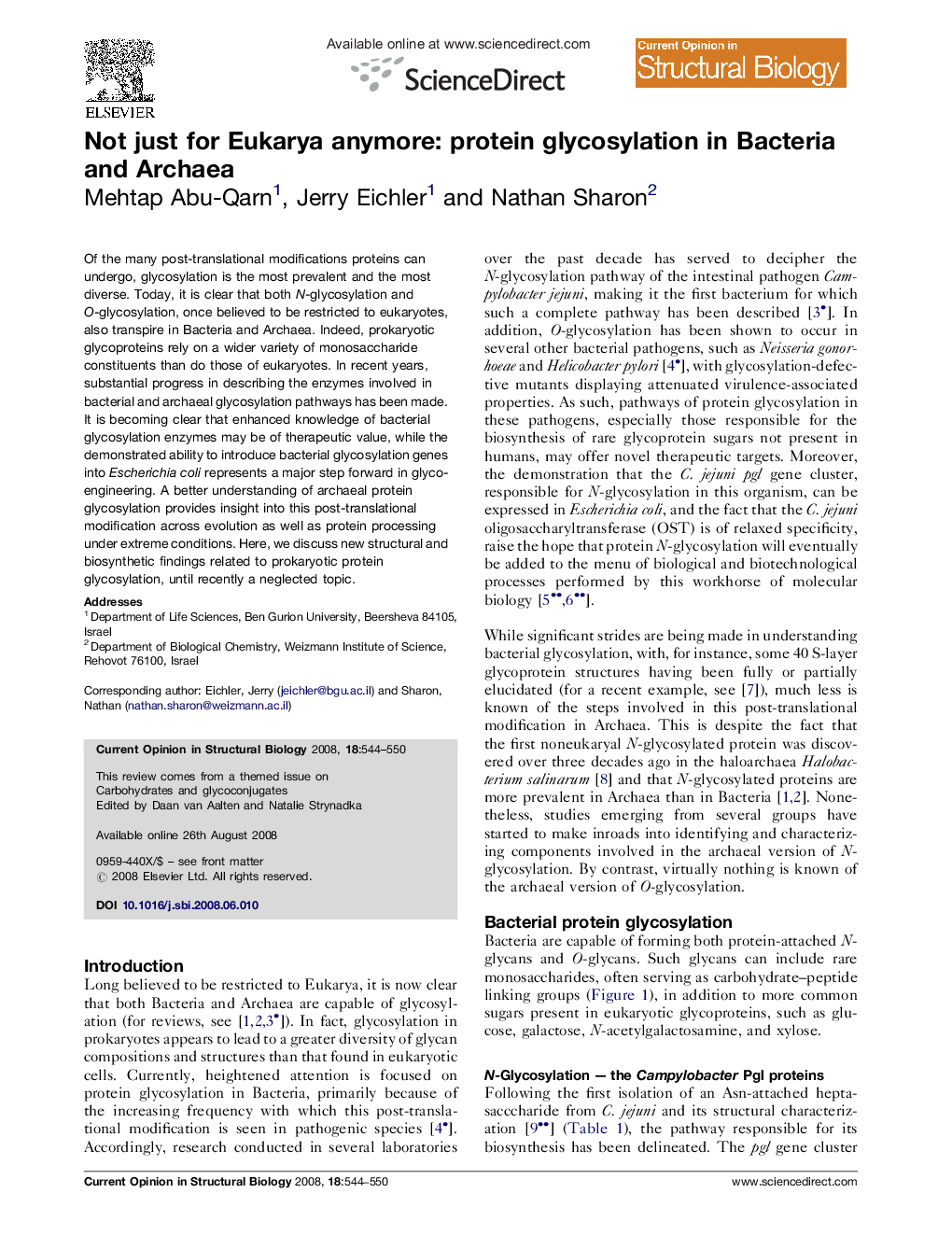| Article ID | Journal | Published Year | Pages | File Type |
|---|---|---|---|---|
| 10822658 | Current Opinion in Structural Biology | 2008 | 7 Pages |
Abstract
Of the many post-translational modifications proteins can undergo, glycosylation is the most prevalent and the most diverse. Today, it is clear that both N-glycosylation and O-glycosylation, once believed to be restricted to eukaryotes, also transpire in Bacteria and Archaea. Indeed, prokaryotic glycoproteins rely on a wider variety of monosaccharide constituents than do those of eukaryotes. In recent years, substantial progress in describing the enzymes involved in bacterial and archaeal glycosylation pathways has been made. It is becoming clear that enhanced knowledge of bacterial glycosylation enzymes may be of therapeutic value, while the demonstrated ability to introduce bacterial glycosylation genes into Escherichia coli represents a major step forward in glyco-engineering. A better understanding of archaeal protein glycosylation provides insight into this post-translational modification across evolution as well as protein processing under extreme conditions. Here, we discuss new structural and biosynthetic findings related to prokaryotic protein glycosylation, until recently a neglected topic.
Related Topics
Life Sciences
Biochemistry, Genetics and Molecular Biology
Biochemistry
Authors
Mehtap Abu-Qarn, Jerry Eichler, Nathan Sharon,
